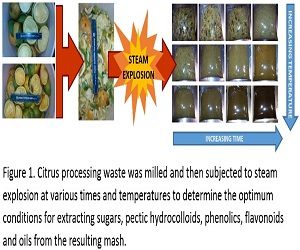
Christina Dorado
USDA-ARS, USA
Title: Steam Explosion for the extraction of sugars, pectic hydrocolloids, phenolics, flavonoids and oils from Citrus sinensis
Biography
Biography: Christina Dorado
Abstract
Statement of the Problem: 95 percent of oranges harvested in the state of Florida are used for juice processing. Citrus processing waste (CPW) is 44% of the fruit mass wet. Currently, processors convert most of the CPW to animal feed pellets and molasses which results in small to negative profit margins due to the energy consumed in the process. CPW contains sugars, pectin, phenolics,
flavonoids and oil that can be extracted and converted to value added products to increase the overall value of the fruit. The US Horticultural Research Laboratory has completed extensive research on the use of steam explosion technology for the extraction of these valuable components of CPW. To date this work has focused on a narrow range of temperatures and hold times and in many cases only monitored the effects on only some of the components from CPW.
Methodology & Theoretical Orientation: In this work we intend to investigate the effect of steam explosion using three different temperatures (130oC, 150oC and 170oC) and various holds times (1,2,4 and 8 minutes) on the two major varieties of CPW from juicing oranges (Valencia and Hamlin) to determine the optimum conditions for the extraction of sugars, phenolics, pectin and limonene from CPW. This work is necessary for determining the conditions for optimizing the extraction of the valuable components found in CPW based on the variety of orange being processed and the compounds of interest for isolation in a comprehensive manner.
Conclusion & Significance: Maximization of the amount of fructose and glucose from CPW required, on average, higher temperatures and longer hold times than sucrose. The concentration of the flavonoid hesperidin increased with increasing temperature and hold time. Pectic hydrocolloids were recovered in greater amounts at higher temperatures but shorter hold times.


